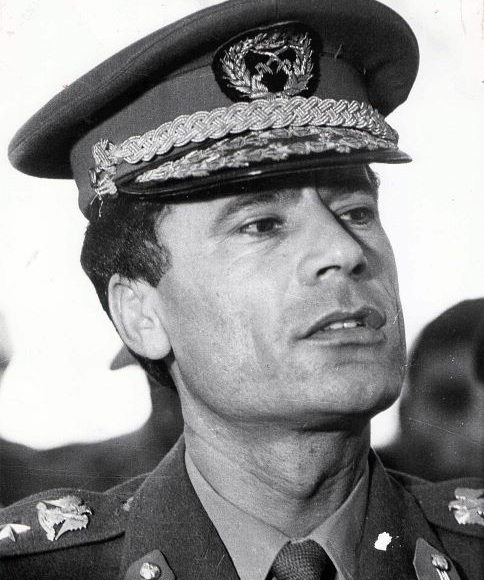August 23 in History
2011 – Libyan leader Muammar Gaddafi is overthrown after the National Transitional Council forces take control of Bab al-Azizia compound during the Libyan Civil War
Muammar Muhammad Abu Minyar al-Gaddafi, the Libyan revolutionary, politician and political theorist who ruled Libya from 1969 was overthrown by rebel forces on this day in 2011, and assassinated several months later.,
Gaddafi came to power through a military coup, first becoming Revolutionary Chairman of the Libyan Arab Republic from 1969 to 1977 and then the ‘Brotherly Leader’ of the Great Socialist People’s Libyan Arab Jamahiriya from 1977 to 2011. Initially ideologically committed to Arab nationalism and Nasserism, Gaddafi later ruled according to his own Third International Theory.
Born near Sirte, Italian Libya, to a poor Bedouin Arab family, Gaddafi became an Arab nationalist while at school in Sabha, later enrolling in the Royal Military Academy, Benghazi. Within the military, he founded a revolutionary group known as the Free Officers movement which deposed the Western-backed Senussi monarchy of Idris in a 1969 coup. After taking power, Gaddafi converted Libya into a republic governed by his Revolutionary Command Council. Ruling by decree, he deported Libya’s Italian population and ejected its Western military bases. He strengthened ties to Arab nationalist governments—particularly Gamal Abdel Nasser‘s Egypt—and unsuccessfully advocated a pan-Arab political union. An Islamic modernist, he introduced sharia as the basis for the legal system and promoted Islamic socialism. He nationalized the oil industry and used the increasing state revenues to bolster the military, fund foreign revolutionaries, and implement social programs emphasizing housebuilding, healthcare and education projects. In 1973, he initiated a ‘Popular Revolution’ with the formation of Basic People’s Congresses, which presented as a system of direct democracy but retained personal control over major decisions. He outlined his Third International Theory that year in The Green Book.
In 1977 Gaddafi transformed Libya into a new socialist state called a Jamahiriya (“state of the masses”). He officially adopted a symbolic role in governance but remained head of both the military and the Revolutionary Committees responsible for policing and suppressing dissent. During the 1970s and 1980s, Libya’s unsuccessful border conflicts with Egypt and Chad, support for foreign militants, and alleged responsibility for bombings of Pan Am Flight 103 and UTA Flight 772 left it increasingly isolated on the world stage. A particularly hostile relationship developed with Israel, the United States and the United Kingdom, resulting in the 1986 US bombing of Libya and United Nations–imposed economic sanctions. From 1999, Gaddafi shunned pan-Arabism, and encouraged pan-Africanism and rapprochement with Western nations; he was Chairperson of the African Union from 2009 to 2010. Amid the 2011 Arab Spring, protests against widespread corruption and unemployment broke out in eastern Libya. The situation descended into civil war, in which NATO intervened militarily on the side of the anti-Gaddafist National Transitional Council (NTC). Gaddafi’s government was overthrown; he retreated to Sirte only to be captured, tortured and killed by NTC militants.
-Wikipedia



Comments are closed, but trackbacks and pingbacks are open.